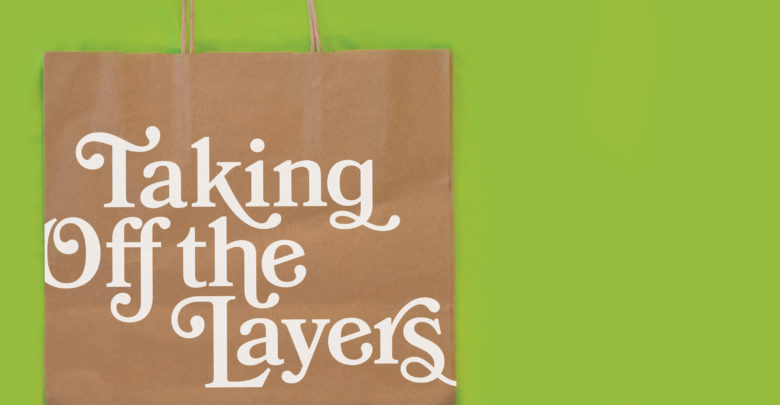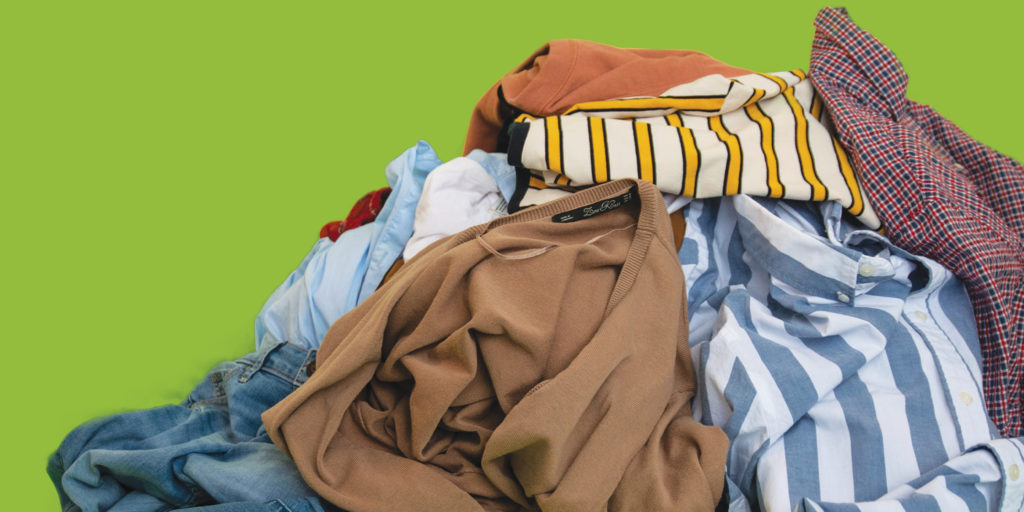 Helen Zhang
Helen ZhangDuring my formative pre-teen years of grades 5 to 8 at a Traditional Learning Center school, I was stuck wearing scratchy navy cardigans and plaid green kilts as my school uniform every day. Oh, and I can’t forget about the knee-high navy socks with shiny black dress shoes. I had no real sense of what fashion is, let alone the opportunity to develop my own style during a time where most children are discovering their own Aesthetic™.
My closet expanded in high school, but it wasn’t until university that I really had the freedom to choose what I wanted to wear. Living away from home and having my first credit cards made it easy to indulge in the guilty pleasure of online shopping. Of course, the financially responsible angel on my shoulder had much more power backing her up (hi, student loans) than her shopaholic demon counterpart. But still, that alluring “check out” button would get clicked every now and then, and a week later, a soft chenille sweater from Forever 21 would appear at my door. It was so softly woven and comfortable that I decided to buy another of the same sweater, in a different colour.
The fiscally minded angel didn’t mind these purchases because I needed some sweaters, and these were less than $15 each. The shopaholic demon on my right hand controlling the mouse was gleefully satisfied, and retail therapy helped cushion the blow to my mental health caused by slipping grades in first year. Everyone was, fleetingly, happy. My credit card bill was well below the monthly limit, so what’s the harm, right?
Unwittingly, I was taking part in the churning wheel of fast fashion.
“Fast fashion” is a term that has recently risen to prominence amidst an era of pervasive climate anxiety and struggles for gender equality. Fast fashion items are designed and produced quickly — and inexpensively — using mostly synthetic materials and cheap labour. The term also carries connotations of disposability; when the poorly made items need repairs, they’re typically thrown away to landfills because of how affordable and replaceable these clothes are. It’s the antithesis to environmental friendliness and fair working conditions. The fast fashion business model fuels rampant consumerism, encouraging shoppers to continuously spend money to keep up with fashion trends. While it’s quick and cheap for clothing to move from production to the consumers’ closets, these items fall apart and into the trash all too soon.
“If things are made to last then you won’t need to buy it again.”
In addition to generating waste, the fast fashion industry is one of the largest environmental polluters in the world. A single T-shirt can take over 2000 litres of water to make; from the growing process to the dyeing and treatments, the amount of water used can be more than a person drinks in three years. Pesticides used to treat crops such as cotton can leach into the soil, destroying the natural ecosystem and poisoning farmers.
In opposition to the practice of chasing trends and accumulating waste, slow or sustainable fashion is a movement that has been gradually gaining momentum in the last decade. The movement aims to change the environmental and social impact of the fashion industry so that consumers and workers both benefit.
New Classics Studio is an online retailer that is part of the slow fashion movement. They sell ethically made products and environmentally conscious clothing, and also aim to educate consumers about what it means to be sustainable. Its founder, Alyssa Lau, is a University of Alberta alumna who started her fashion blog during university and began to work at a women’s boutique. Instead of pursuing graduate studies in biochemistry, she launched New Classics Studios after learning about sustainable fashion. The online store became one of Canada’s first retailers focused on sustainability.
For Lau, sustainability isn’t a gold medal achieved by fulfilling a standardized checklist of environmental friendliness. “Sustainability is an umbrella term,” she says. “A lot of people don’t know how to define it, but for us, it’s about how a brand makes its clothing and how its making sure that workers are paid fairly.”
Slow fashion is a movement that focuses on sustainable practices of producing clothes. This entails environmentally friendly ways of sourcing material as well as fair compensation for workers. Sustainably-focused brands create items of higher quality, and often in smaller batches. Many slow fashion brands only use ethically sourced, cruelty free, and natural materials in their products. For local Edmonton artisans like Libertine Fragrance, a brand carried by New Classics Studios, it’s important to reduce their carbon footprint where they can. In addition to limiting their unisex fragrances to small batches with cruelty free testing, their packaging is recyclable and printing is done locally through a family-owned Edmonton print shop.
Producing small batches and sourcing services locally is in stark contrast with fast fashion practices of overproduction and high emissions from worldwide shipping. Using marketing tactics such as “flash sales” and new arrivals daily, brands create an illusion of both exclusivity and never-ending variety. Consumers feel the need to catch the best deals and have the best looks, which is easy enough when the same basic shirt comes in a hundred variations and all cost roughly $7 each.
Unfortunately, the satisfaction of snagging a cute dress at a sweet deal is often built on a mountain of pollution and waste. Lau ruefully points out that “brands like Zara and H&M have 52 seasons because they push out a new collection every week, and they just sit on piles of unsold clothes.” With the rise of social media influencers, the need to stay on top of current trends is more prevalent than ever. Naive audiences are often convinced that their current clothes are no longer acceptable and look up to influencers as examples of what to wear, unaware of the truth behind curated candid photos. “Sometimes influencers will buy clothes just to take photos,” Lau reveals. “They basically give these brands free advertising and then return the clothes after.”
Even brands that have traditionally enjoyed a higher reputation are resorting to fast fashion tactics. The annual Victoria’s Secret Fashion Show was one of the most high profile shows of the industry during its run and enjoyed a large fanbase across genders and ages, with its sister brand PINK marketed towards young teens. However, even brands like Victoria’s Secret and PINK are complicit in preying on consumers and workers in the fast fashion chain. Once a lingerie powerhouse that defined beauty, the brand has been plagued with scandals, such as excluding transgender women from the runway and Jefferey Epstein abusing his connections to Victoria’s Secret to sexually exploit young women.
Much like other trend-based retailers, Victoria’s Secret relies on fast production of items. Former CEO, Sharen Turney, remarked that their lingerie runs on a “speed program,” explaining they had already cut four months out of development time and plan to take out two more. Evidently, this means relying on cheap labour and materials. The drop in product quality, however, is easily masked by glitzy marketing, sexualization of youth, and sales tactics offering huge discounts. Young women are often convinced to consume more of these products, without realizing the underlying harm, in order to retain confidence and beauty. Resisting this urge can be tough, and requires conscious effort. “When you see something for the first time and want to buy it, sleep on it and ask yourself, ‘who made these clothes?’” Lau suggests.
As brands that claim to empower and push women to feel beautiful and confident, it’s darkly ironic how much harm they can bring to women on a global scale. Gender discrimination is yet another dark alley that lurks in the fast fashion empire.
Approximately 80 per cent of garment workers are women, and they are the ones disproportionately feeling the abuse of the industry. When fast fashion became popular in the 90s, garment factories moved from North America to developing countries, such as Bangladesh, India, and China, where labour costs are cheap and willing workers are abundant. When women need a break from the 16-hour days, toxic breathing conditions, and physical abuse — or simply requesting maternity leave — they will often be fired and left to find income elsewhere. Large brands like Victoria’s Secret and PINK can simply claim ignorance of these atrocities because supply chains are so convoluted and difficult to trace.
The social impact of fast fashion worsens when we consider where discarded clothing ends up. Although many consumers believe that they can simply donate unwanted clothes, many cheaply made pieces make their way back to developing countries. These clothes inevitably end up flooding local markets and pushing out local businesses, or end up in landfills.
So why are slow fashion clothes more costly? The goal of sustainable and slow fashion is not only about using less wasteful and more environmentally conscious ways of producing clothes. It’s also a movement towards equality and fair working conditions for the people who produce materials and make the garments. The higher prices attached to these clothes mean that workers can be paid fairly, and higher quality materials can be used. In the end, consumers still benefit from these costs. “If things are made to last then you won’t need to buy it again. The cost per wear of one well made, timeless piece is cheaper than something that’s trend-based and disposable,” Lau says.

Although the detrimental effects of fast fashion seem clear, the morality of practicing sustainable fashion isn’t entirely black and white. Talking to Vlada Blinova and Jane Batcheller, they gave me more insight as to why there is no single answer to achieving sustainability.
Blinova is the collections manager of the Anne Lambert Clothing and Textiles Collection at the U of A. She also teaches undergraduate apparel design courses in the Faculty of Agriculture, Life and Environmental Sciences (ALES). In her apparel design courses, her students are encouraged to practice sustainability by upcycling — reusing and repurposing — previously used fabrics. Natural fibers are also favored, as they are more likely to be biodegradable. However, Blinova cautions against blindly believing that natural fibers are the answer. “A lot of dyes and pesticides used to treat the natural materials can be quite harmful [to humans], it really is a slow poisoning,” she explains.
Natural fibers are generally viewed as more environmentally friendly than synthetic ones. However, even within the gold standard of natural fibers there exists a convoluted hierarchy of sustainability. Cotton, for example, is a popular material for garment making. However, cotton is a notoriously low-yield crop that requires heavy usage of water and pesticides. While it’s a natural material, cotton agriculture is both harmful to humans and the environment.
“Sustainability is not so black and white. Maybe you don’t want to cause harm in one way but it becomes harmful in another way.”
There are, however, natural fibers that are sustainably grown. Lyocell is a material made from the wood pulp of eucalyptus trees, a plant that grows quickly without pesticides, genetic modification, or heavy irrigation. It’s also biodegradable, which makes it more eco-friendly than other wood pulp based fibers such as rayon and modal. Even animal products, such as alpaca wool, can be collected in a cruelty-free way and be an eco-friendly alternative to sheep’s wool.
Blinova notes that vegan practices, while they may look appealing, may not always be the most sustainable. Although it may seem more eco-friendly to steer clear of consuming animal products, alternatives can actually create more pollution and harm to ecosystems. “I really respect the Indigenous way of using all parts of an animal, including the skin and fur for clothing,” Blinova says. “It’s less wasteful and harmful than strictly using non-animal materials.” Alternatives, like faux leather, can require more chemical treatment and processing and these harsh chemicals can, ironically, poison the natural habitats that these animals live in. “That’s why sustainability is not so black and white. Maybe you don’t want to cause harm in one way but it becomes harmful in another way.”
Unfortunately, my fantasy of a garment industry using only alpaca wool and eucalyptus wood pulp may just have to remain a fantasy. Jane Batcheller, a faculty of ALES lecturer and principal investigator of the Protective Clothing and Equipment Research Facility, dives into why synthetic fibers are unavoidable at times. Petroleum based materials such as polyester release microplastics when washed, contributing to the phenomenon of microplastics appearing in human bodies. However, clothes such as protective wear often need to be made from synthetic materials.
“Some natural fibers just aren’t as heat resistant or water resistant as synthetic ones,” Batcheller explains. However, protective clothing is needed at a much lower rate than the mass consumerism of regular clothing. Both Jane and Vlada agree that the mindset of consumers need to change in order for the industry to move towards more sustainable practices. “There’s research being done on how to make synthetic fibers biodegradable. That means it returns to the earth as food rather than just falling apart into small pieces,” Batchellor says. “But that shouldn’t give people the pass to keep buying and buying just because you think it will biodegrade.”
Rather than throwing away clothes that have small wear and tear, Blinova suggests learning how to sew and repair clothes. “We need to change our mindsets,” she asserts. “People used to mend their clothes and take very good care of them by handwashing and spot cleaning. We shouldn’t just throw away clothes and keep buying more.”
Changing the mindset of constant consumerism is crucial to sustainability. Lau and Blinova both caution against buying more clothes just because a brand claims to be sustainable. Greenwashing is a marketing tactic that creates an illusion of sustainability. H&M, for example, has a Conscious Collection of garments that use at least 50 per cent sustainable materials such as organic cotton or recycled polyester. However, as Lau points out, consumers should question “where are they sourcing the materials? Who’s making these clothes?”
Jenna Bacchus, is a business student at the U of A who is taking a different approach to fashion consumerism. She created Campus Closet, a market place specifically aimed at students to safely buy and sell gently used clothing. Bacchus believes that by creating an avenue for students to buy affordable, second-hand clothes, the carbon footprint of needing to purchase clothing decreases.
“If you’re buying something Zara or PrettyLittleThing, the shipping emissions can be so high. By buying something that’s already here and pre-worn, you’re giving it a second chance and making less waste,” she explains.
Safety and affordability for students is one of the top priorities of Campus Closet. Instead of searching for a completely new item that may be costly, or going to a stranger’s house from Facebook Marketplace, students can exchange items on campus. Jenna also believes that Campus Closet can help change how students view consumerism. “The goal of Campus Closet is to open your mind to the idea that you don’t need to be buying new things all the time,” she explains.
Echoing the sentiments of Lau, Batcheller, and Blinova, Bacchus urges students to seek education on sustainability. The layers of sustainable fashion can be arduous to peel off, and there may not be one single answer at the centre of it all. It would be a lie to say that I’m not occasionally tempted to browse the dresses of Fashion Nova or see a pair of shoes and immediately think “I need that.” However, it’s also dystopically twisted that a shirt can cost less than a cup of coffee.
Practicing sustainable fashion isn’t just a cool new label to attach to ourselves in order to clear our moral conscience. It’s about truly understanding the social and environmental impact of mindless consumerism in the fashion industry. Besides saving money in the long run by investing in timeless, high-quality clothing, practicing slow fashion comes with benefits on a global scale.
It can be disappointing, for the average university student, to wade through the choices of slow fashion brands and discover that shirts are no longer less than 20 dollars. But there is a choice for everyone, whether it’s upcycling used materials, shopping second hand, or simply buying less; it’s better to do something than to stay comfortably complicit in the abuse of the environment and other human beings.
With so many avenues of sustainability to go down, from supporting fair trade to choosing ethically grown fibers, escaping the fast fashion empire is a journey that we all have a responsibility to take.




